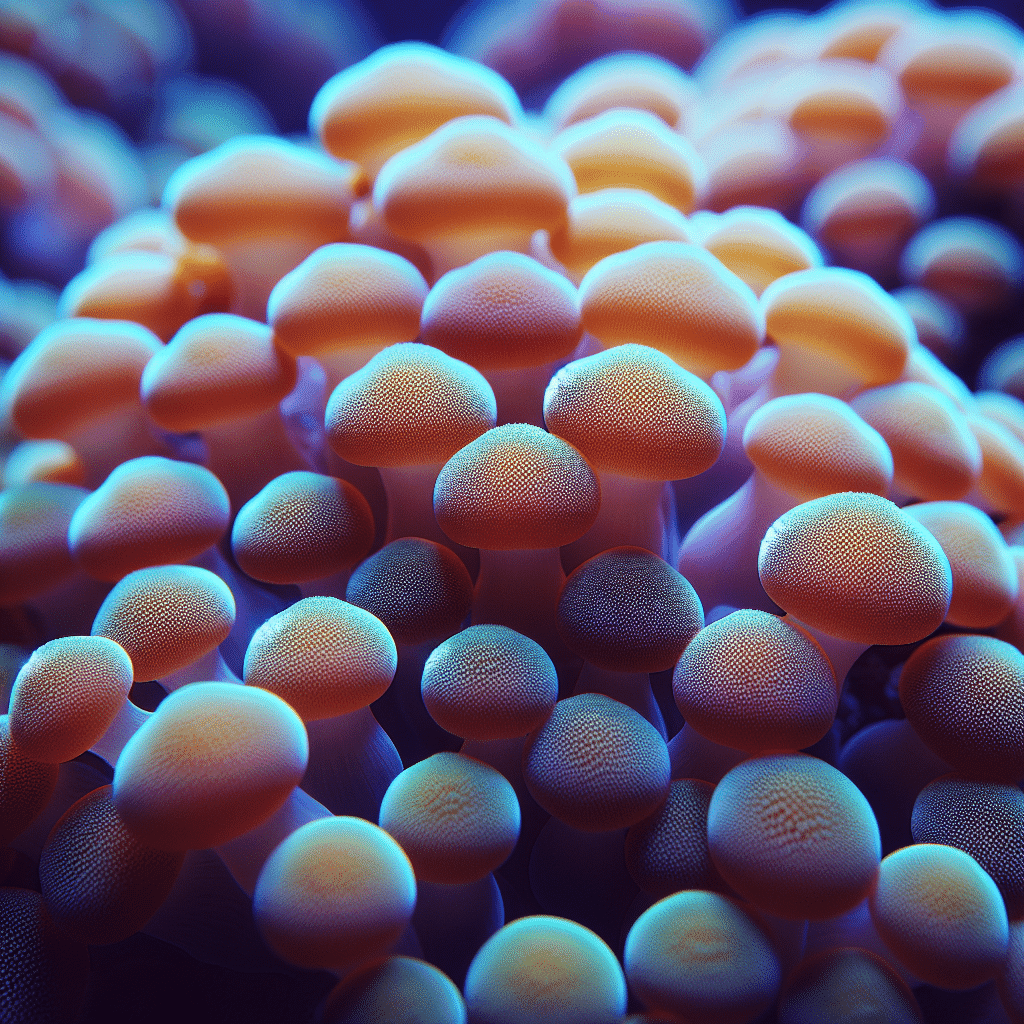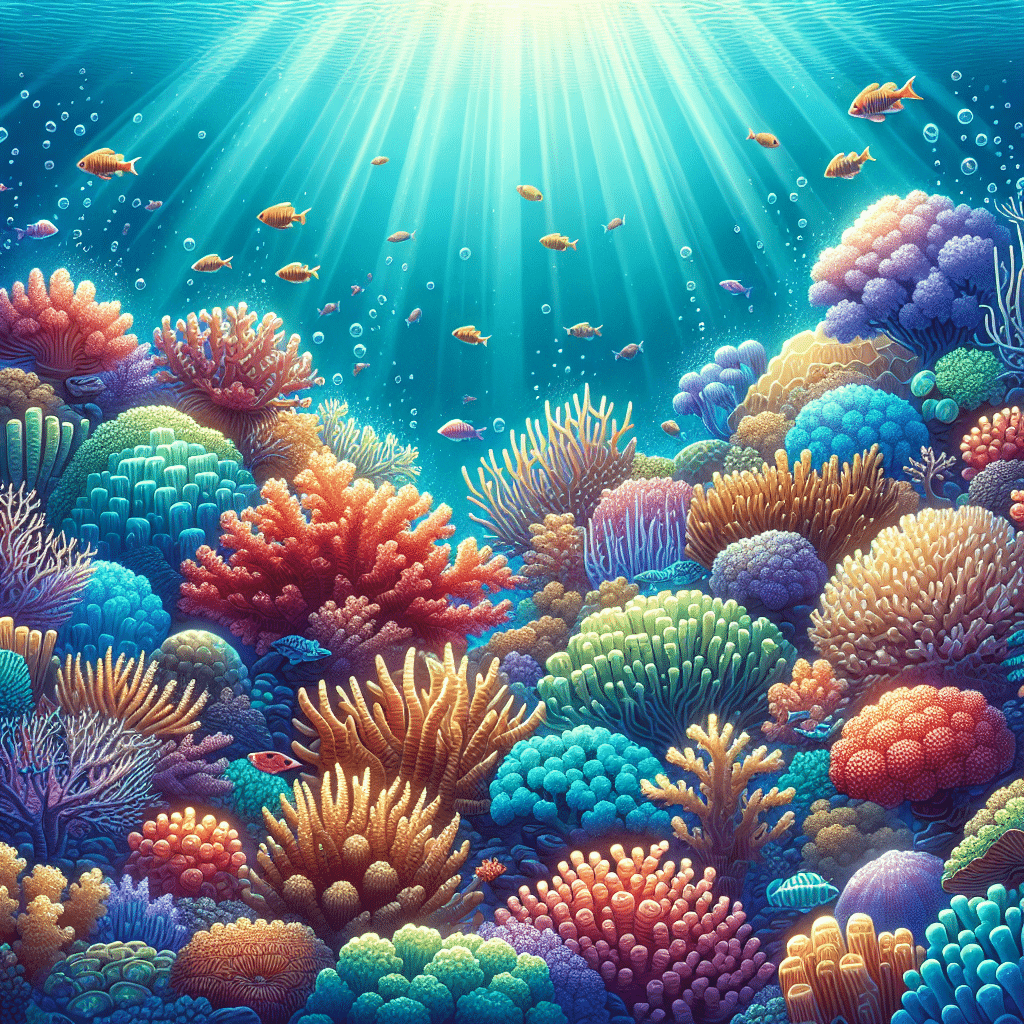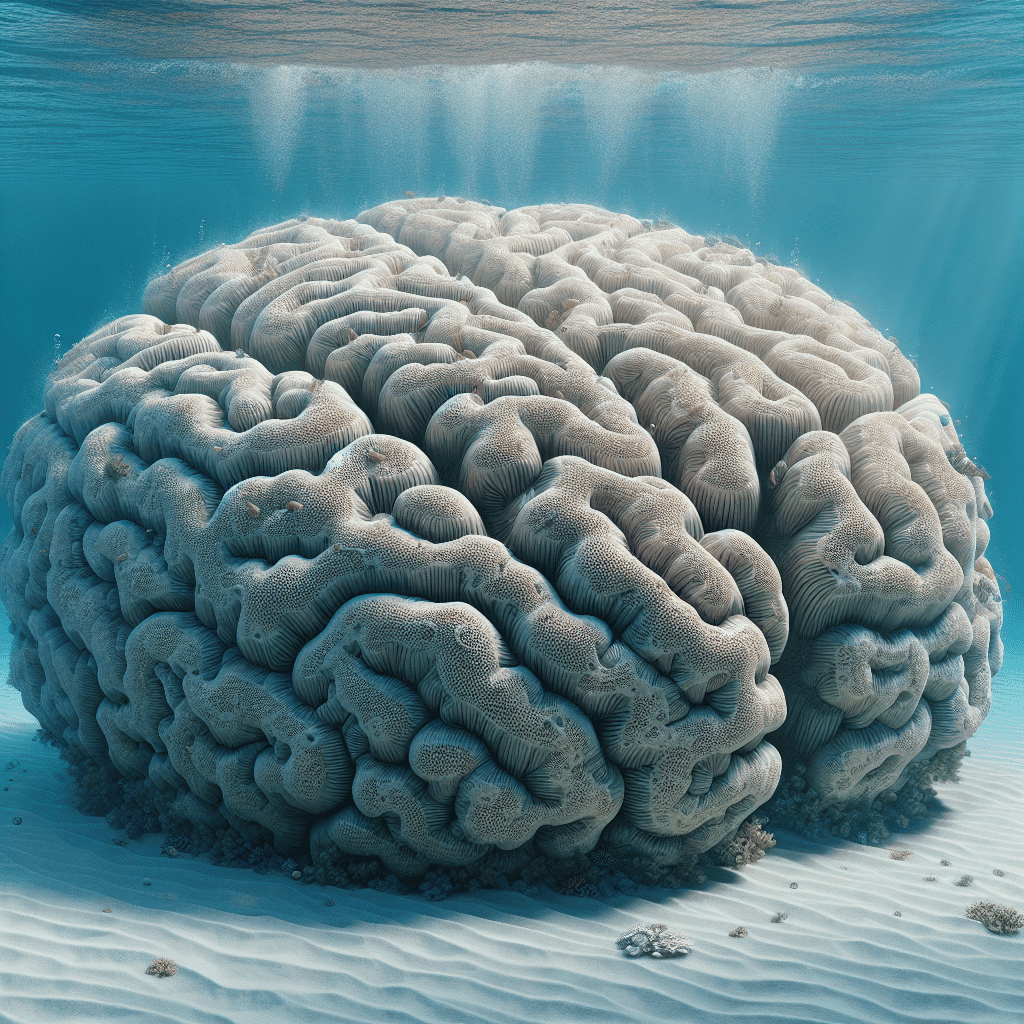Understanding Mushroom Corals
Mushroom Coral Overview
Mushroom corals, specifically Fungia fungites, are fascinating marine organisms that can be found in various reef environments. I find them particularly interesting because they are often one of the easiest types of soft corals to keep in a home aquarium. They thrive in the right conditions, grow quickly, and are known for being nearly indestructible, making them a favorite for beginner reef-keepers. Their unique structure allows them to play a significant role in reef ecosystems, as they help to create habitats for other marine life.
Importance of Mushroom Corals
Mushroom corals are not just beautiful; they serve crucial functions in the marine ecosystem. They contribute to reef development by colonizing inhospitable areas of the reef. When they eventually die, they provide a substrate for less sensitive corals to attach to, facilitating the reef’s growth (Seaunseen). However, it’s important to note that mushroom corals are currently listed as Near Threatened due to various factors such as habitat loss, coral bleaching, and over-collection for the aquarium trade (Cleveland Metroparks Zoo Resource Library).
Furthermore, mushroom corals are included in Appendix II of the Convention on International Trade in Endangered Species (CITES), which means their trade should be carefully regulated to prevent overexploitation, especially in developing regions where they might be harvested unsustainably (Seaunseen). Conservation efforts are underway to protect these corals and their habitats, ensuring they remain a vital part of our oceans for future generations.
In summary, mushroom corals are essential not only for their beauty but also for the ecological role they play in coral reefs.
Habitat and Characteristics
Mushroom Coral Habitat
Mushroom corals, scientifically known as Fungia scutaria, are quite fascinating because they are non-colonial. Each specimen is its own individual polyp, which means they don’t have a stable living arrangement and don’t permanently reside alongside other polyps. In their early stages, they attach to a substrate, developing a stalk that resembles a mushroom. As they mature, the stalk breaks off, allowing the adult coral to move freely in search of suitable habitats.
These corals typically thrive in tropical and subtropical reef environments, where they can be found on sandy bottoms or in areas with low water movement. They play a significant role in reef development by colonizing inhospitable areas. When they die, their calcium carbonate structures provide a substrate for other less sensitive corals, facilitating the reef’s expansion.
Physical Characteristics
Mushroom corals are oval-shaped and can grow up to 17 centimeters long. They have a distinctive raised center that gives them a dome-like appearance. The tentacles, which are usually extended at night, can exhibit a variety of colors including yellow, blue, or brown. The mouth of the coral extends across the center, making it quite unique among corals (Seaunseen).
Here’s a quick summary of the physical characteristics of mushroom corals:
| Feature | Description |
|---|---|
| Shape | Oval, dome-shaped |
| Maximum Size | Up to 17 cm long |
| Tentacle Colors | Yellow, blue, brown |
| Mouth Location | Center of the coral |
Mushroom corals are not only visually striking but also ecologically important. They contribute to reef health and stability, making it essential for aquarists to understand their habitat and characteristics for successful care in a reef tank setting. For more about caring for corals, check out our section on corals.
Threats and Conservation
Threats to Mushroom Corals
Mushroom corals, particularly Fungia fungites, face several threats that have led to its classification as Near Threatened. The most significant threat is habitat loss, which occurs due to the extensive reduction of coral reef environments. Coral bleaching, often triggered by rising ocean temperatures and pollution, further jeopardizes their survival. Additionally, mushroom corals are collected for the aquarium trade and curio market, which exacerbates their decline. They are also listed on Appendix II of the Convention on International Trade in Endangered Species (CITES), which means their trade should be carefully regulated to prevent overexploitation, especially in developing regions where they are harvested for construction purposes (Cleveland Metroparks Zoo Resource Library, Seaunseen).
Here’s a summary of the main threats:
| Threat Type | Description |
|---|---|
| Habitat Loss | Extensive reduction of coral reef habitats. |
| Coral Bleaching | Caused by rising sea temperatures and pollution. |
| Over-collection | Harvesting for aquarium and curio trade. |
Conservation Efforts
Conservation initiatives for mushroom corals aim to assess their status and ensure their protection. The focus is on conserving their habitat over the next 5-10 years. A long-term vision includes protecting mushroom corals as a flagship species in the Philippines. This involves promoting healthy coral reefs through collaborative management strategies that provide social, economic, and ecological benefits to both current and future generations. Conservation efforts also extend to improving the overall health of coral ecosystems to support species like mushroom corals.
Some ongoing conservation strategies include:
| Conservation Strategy | Description |
|---|---|
| Habitat Protection | Initiatives to protect and restore coral reef habitats. |
| Regulation of Trade | Implementing CITES guidelines to control collection. |
| Collaborative Management | Working with local communities to promote sustainable practices. |
By understanding the threats faced by mushroom corals and supporting conservation efforts, we can help ensure their survival and promote the health of coral reefs worldwide.
Care and Placement
Caring for mushroom coral can be a rewarding experience, especially when you know how to place them correctly in your aquarium. Here’s what I’ve learned about their ideal placement, lighting, and water flow.
Placement in Aquarium
Mushroom corals thrive best when placed in the middle or bottom of the tank. They need a surface for their foot to grip, which helps anchor them while providing protection from strong currents and aggressive neighbors. It’s fascinating that these corals have the ability to “walk” or move themselves to find a suitable spot within the aquarium (Top Shelf Aquatics).
For best results, I recommend checking the following placement guidelines:
| Placement Area | Notes |
|---|---|
| Middle of Tank | Ideal for stability and protection |
| Bottom of Tank | Provides a safe area with less light |
| Grip Surface | Ensure a suitable surface for attachment |
Lighting and Water Flow
When it comes to lighting, mushroom corals prefer low to moderate light levels. The ideal PAR (Photosynthetically Active Radiation) range is between 50 to 150. If exposed to high light, they can become bleached and damaged, which is something every hobbyist wants to avoid.
In terms of water flow, these corals are best kept in areas with low to moderate flow. Most mushroom species do well in low flow environments. This not only helps them maintain their structure but also makes feeding easier (World Wide Corals).
Here’s a quick look at the recommended lighting and flow conditions:
| Condition | Recommended Level |
|---|---|
| Lighting (PAR) | 50 – 150 |
| Water Flow | Low to Moderate |
By providing mushroom corals with the right placement, lighting, and water flow, I’ve found that they not only thrive but also add vibrant beauty to the reef tank. If you’re curious about other types of corals, check out articles on zoanthids or brain coral for more inspiration!
Feeding and Reproduction
Feeding Habits
Mushroom corals are fascinating creatures with unique feeding habits. They have the ability to capture and ingest various types of food, making them quite adaptable in an aquarium setting. With their large mouths, they can efficiently feed on larger prey like salps, which are small marine animals. The presence of multiple mouths in certain mushroom corals allows them to have a larger surface area for catching food (Springer Link).
In the aquarium, I often feed my mushroom corals a mix of high-quality coral foods, including:
| Food Type | Description |
|---|---|
| Pellets | Nutritionally balanced and easy to digest. |
| Frozen Foods | Includes brine shrimp, mysis shrimp, and other marine proteins. |
| Liquid Foods | Liquid coral foods designed for filter feeders. |
These foods help support their growth and health. I also make sure to provide a high-nutrient environment, as mushroom corals thrive in such conditions, which can accelerate their growth and overall well-being.
Reproduction Process
Mushroom corals can reproduce both sexually and asexually, which is quite interesting. In home aquariums, asexual reproduction is more common. This process typically involves budding, where a small piece of tissue forms and eventually breaks off from the main body of the mushroom coral (Top Shelf Aquatics).
During sexual reproduction, mushroom corals release gametes into the water, which then fuse to form new coral larvae. These larvae eventually settle and form new mushroom corals. This dual reproductive strategy allows mushroom corals to adapt to their environment and maximize their chances of survival.
It’s also fascinating to note that mushroom corals can move themselves to find a better spot in the aquarium, a behavior known as “walking.” This allows them to locate areas with optimal light and flow for feeding and growth.
Varieties of Mushroom Corals
Mushroom corals are a popular choice for reef tank enthusiasts, and there are several species and color variants to consider. I find that understanding these varieties can significantly enhance my aquarium’s aesthetic and biodiversity.
Different Species
Mushroom corals come in various species, each with its unique characteristics. Here are some of the most common ones:
| Species | Description |
|---|---|
| Ricordea | Known for its vibrant colors and unique textures. |
| Discosoma | Features a wide range of colors and is quite hardy. |
| Rhodactis | Recognized for its diverse appearances and adaptability. |
These species are favored by many reef-aquarium hobbyists because they are easy to care for and can thrive in different conditions.
Color Variants
One of the most appealing aspects of mushroom corals is their color variants. These colors can range widely, adding a vibrant touch to any aquarium. Here are some common color variants I often see:
| Color | Description |
|---|---|
| Yellow | Bright and cheerful, often seen in Ricordea species. |
| Blue | Stunning and eye-catching, a favorite among hobbyists. |
| Brown | More subdued, providing a natural look in aquariums. |
These colors not only contribute to the visual appeal of the tank but also allow for creative aquascaping opportunities. The tentacles of mushroom corals can also exhibit different colors, adding further diversity to their appearance (Seaunseen).
Mushroom corals are considered one of the easiest types of soft corals to keep, making them suitable for beginner reef-keepers. They grow quickly and are not aggressive, which is another reason I enjoy including them in my setups (Top Shelf Aquatics).
Water Parameters and Maintenance
Taking care of mushroom coral in my reef tank is pretty straightforward once I understand their water quality needs and how to maintain their environment.
Water Quality Needs
Mushroom corals are quite adaptable and do not have specific water parameter requirements. They can tolerate a broader range of conditions compared to many other corals. However, I need to keep an eye on the levels of phosphates and nitrates, as excessive amounts can be harmful to them. Here’s a quick overview of the ideal water parameters for my mushroom corals:
| Parameter | Ideal Range |
|---|---|
| Temperature | 72°F to 78°F (22°C to 26°C) |
| Salinity | 1.023 to 1.025 specific gravity |
| pH | 8.1 to 8.4 |
| Nitrates | < 5 ppm |
| Phosphates | < 0.03 ppm |
Mushroom corals thrive in high-nutrient systems, which can actually boost their growth and reproduction. They even have the cool ability to “walk” to find a more suitable spot in the aquarium!
Maintenance Tips
To keep my mushroom corals healthy, I follow a few simple maintenance tips:
Regular Water Changes: I aim for a 10-20% water change every 1-2 weeks to maintain water quality and reduce the buildup of harmful substances.
Monitor Parameters: Using a good test kit, I regularly check the water parameters, especially nitrates and phosphates. Keeping these levels in check is crucial.
Lighting: I place my mushroom corals in lower-light areas of the tank, aiming for a PAR (Photosynthetically Active Radiation) range of 50-150. Excessive light can bleach and damage them (World Wide Corals).
Flow: I ensure they are in areas with low to moderate water flow. Too much flow can stress them out, while too little can lead to stagnation.
Placement: I position my mushroom corals in the middle or bottom of the tank, providing a stable surface for their foot to grip. This helps keep them secure while they grow.
By following these tips and understanding their needs, I can ensure that my mushroom corals thrive in my reef tank. If I’m looking for more coral care insights, I might also explore other types of corals like zoanthids or brain coral.
Interactions and Behavior
Coral Interactions
Mushroom corals are fascinating creatures that play a significant role in the reef ecosystem. They often interact with various marine life, contributing to the overall health and development of coral reefs. One of their remarkable abilities is to move down the reef onto inhospitable sections, which helps facilitate the expansion of the reef. When mushroom corals die, they provide a substrate for less sensitive corals to adhere to, promoting further reef development (Seaunseen).
Interestingly, I read about an observation of mushroom corals in Kota Kinabalu, Malaysia, where they were seen preying on slow-moving salps. In July 2011, coral species such as Cycloseris costulata and Danafungia scruposa were documented catching and ingesting these gelatinous creatures, showcasing their ability to capture food effectively.
| Coral Species | Prey Observed |
|---|---|
| Cycloseris costulata | Salps |
| Danafungia scruposa | Salps |
| Fungia fungites | Salps |
| Pleuractis moluccensis | Salps |
Behavioral Traits
Mushroom corals exhibit unique behavioral traits that enhance their feeding efficiency. Their large mouths allow them to capture larger prey, such as salps, which can be a considerable food source. The presence of multiple mouths in some polystomatous corals provides a larger surface area for catching food, making it easier for them to feed on sizable prey when available (Springer Link).
These adaptations are particularly beneficial in nutrient-scarce environments, allowing mushroom corals to thrive even when food is limited. Their ability to capture prey effectively is a key factor in their success as reef builders and as an integral part of the marine ecosystem.
For more on the interactions and behaviors of other corals, you might find it interesting to explore articles on brain coral or duncan coral.
Interesting Facts and Research
Mushroom Coral Studies
I find the research surrounding mushroom corals to be fascinating, especially considering their role in reef ecosystems. One significant study conducted in the reefs of Kota Kinabalu in Sabah, Malaysia, observed these corals actively preying on slow-moving salps. In July 2011, researchers noted that mushroom corals were not just passively filtering water but were effectively catching and ingesting salps, some measuring between 2-6 cm long. This was a groundbreaking observation, marking the first record of mushroom corals consuming numerous salps. For more details, check out the study on Springer Link.
Interestingly, among the 34 recorded species of mushroom corals at Kota Kinabalu, nine were observed preying on salps, including species like Cycloseris costulata and Danafungia scruposa. These corals were seen with either complete salps or remains of salps inside their mouths, showcasing their predatory capabilities.
Unique Behaviors
The behaviors exhibited by mushroom corals during feeding are particularly intriguing. Corals with larger mouths have been noted to be more effective at capturing larger prey like salps. The presence of multiple mouths in polystomatous corals allows for a greater surface area, enhancing the coral’s ability to catch food. This trait is especially beneficial when larger prey is available, as seen in many polystomatous fungiids. The combination of large mouths and multiple feeding surfaces creates an efficient feeding strategy that helps these corals thrive in their environments.
The study highlights how these adaptive traits contribute to their success in various habitats. The ability to consume larger prey not only helps in nutrient acquisition but also plays a crucial role in the overall health of the reef ecosystem. For those interested in the diverse world of corals, exploring more about species like brain coral or torch coral can be quite enlightening.



